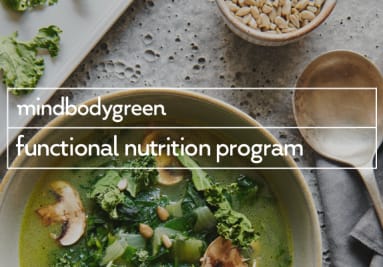I’d recently come off a yearlong odyssey healing my Hashimoto’s one lifestyle change at a time, and as part of it had learned the do’s and don’ts of living with my microbiome in mind. I was eating plenty of fiber, dousing my grain bowls in kefir green goddess dressing and kimchi, and washing it all down with homemade kombucha. Small-intestinal bacterial overgrowth is exactly what it sounds like: a type of dysbiosis1, which simply means an imbalance in the trillions of bacteria that take up residence in your gut. In the case of SIBO, however, the issue is not necessarily the ratio between good, beneficial bacteria and bad, pathogenic bacteria (though that could be part of it). Rather, the main problem is location, not type. Though critters colonize all sections of our alimentary canal, the majority of it is found in the large intestine (also known as the colon), where it assists in the final step of the digestive labyrinth and prepares for evacuation. The small intestine, on the other hand, is where your food intermingles with digestive juices, nutrients are absorbed into the bloodstream, and your body reaps the rewards of what you’ve just put in it. It’s not a place where bacteria have much of a function. In fact, as is the case with SIBO, their increased presence causes a host of issues. Since these are living organisms with their own palates and cravings, bacteria in your small intestines means there are other mouths at the table competing for your dinner. And when there’s not enough nourishment to be had, they turn to the next best thing (you!), which can lead to leaky gut and food sensitivities. Now that I’m SIBO-free, I want to share some of the tips I’ve learned from interviewing the leading SIBO experts across the world on my podcast, SIBO Made Simple. These are the things I wish I’d known when I was first diagnosed and advice that you should keep in mind when designing a SIBO diet adventure of your own: Though diet can certainly help you heal your gut from SIBO—improving leaky gut and alleviating symptoms—it’s not the root cause of your SIBO and therefore usually not the lone cure. 2. Try the diet for a few weeks until your symptoms are more under control and your gut has had a chance to heal, then begin reintroducing small quantities of high-FODMAP foods or grains in tandem with starting your medication. This will stir up some of the remaining critters at the same time as you begin taking pills to kill them. Both tactics have been touted clinically (for the record, no SIBO diet has been scientifically proved in studies), so don’t stress about their opposing nature; pick one and stick with it. If you take away anything from points 1 and 2 above, it’s that being perfect on the low-FODMAP front will not make your SIBO go away. And in fact, being willing to be uncomfortable and reintroduce food sources to your bacteria can actually help you eradicate them completely. It will also lead to better long-term gut health going forward. Many practitioners don’t recommend staying on a strict low-FODMAP diet for longer than two months. Since your MMC kicks in during a fasting state of 90 minutes or more, it’s important not to snack between meals. Consider light intermittent fasting—12 to 16 hours overnight. (For more information, check out our complete guide to intermittent fasting). Drinking lemon water or apple cider vinegar before meals may stimulate stomach acid, which helps kill bacteria coming into your system and prevents more of a buildup in the small intestine. And most importantly, enjoy your food. Stress is the worst possible thing for digestive health. Don’t let any new dietary restrictions get in the way of your pleasure—it won’t do your gut any favors.



